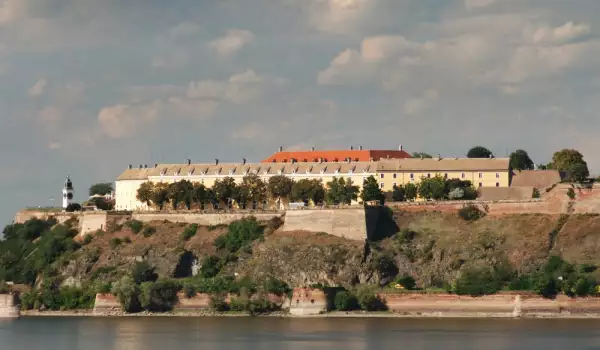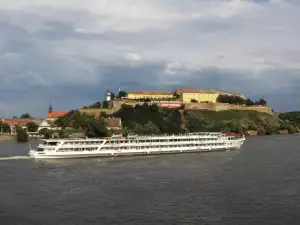Petrovaradin Fortress

Fortress Petrovaradin is one of the most impressive and massive palace complexes on the territory of Eastern Europe. Today Petrovaradin Fortress is where the festival – EXIT is held each summer and it is one of the biggest music events of the Old Continent.
For four days in July the outside walls of Petrovaradin will have 25 scenes located around them as they express one of the biggest names in rock, metal and alternative music. The Dance Arena is the second biggest stage for electronic parties across Europe and is located in the amphitheater of the castle Petrovaradin.

Petrovaradin is a medieval building that is situated on a hill on the right bank of the Danube and on the left coast remains the second largest Serbian city - Novi Sad. Petrovaradin, which today is considered a suburb of Novi Sad, is connected by a bridge over the Danube to the big city. The Fortress Petrovaradin is particularly attractive mainly because of its many underground tunnels which have a total length of about 16 km. It is claimed that some of the passages reach different houses in the town.
The current fortress Petrovaradin was built in 1690 on the old foundations of a Roman fort. At that time territories were torn by clashes of the rebellion prompted by the Austrians.
In the 17th century Peter arrives, who was one of the leaders of the First Crusade. It is this captain that gave the name of the town and fortress. The second component comes into the name of the city – Varadin, which has an Indo-European origin and translates as, watch keeper. Austrians called the fortress - Petrovaradayner Hills.

Fortress Petrovaradin occupies an area of 112 hectares. During the period of 1754-1756 on the orders of Empress Maria Theresa an extensive building campaign of Petrovaradin Fortress began. After her, the construction of the castle was reinforced by new bastions and a clock tower was added.
It was finally completed in 1760 and gets the impressive nickname "Gibraltar of the Danube". The project of the fortress Petrovaradin was the work of the French builder of fortresses Sebastian Le Pretend Vauban, 1633-1707.
Today it homes the most perfectly preserved ramparts, moats and gates. In the days of military might the fortress could accommodate a garrison of 30, 000 people.
Today in the perfectly preserved parts of the fortress Petrovaradin, many cultural events take place. All year, except the four days of the festival EXIT, it is occupied by the working studios of various artists and craftsmen.















